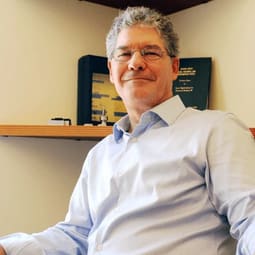
J. Michael Ramsey
Goldby Distinguished Professor of Chemistry, Professor of Biomedical Engineering, Professor of Applied Physical Sciences, The University of North Carolina at Chapel Hill, USA
False

Goldby Distinguished Professor of Chemistry, Professor of Biomedical Engineering, Professor of Applied Physical Sciences, The University of North Carolina at Chapel Hill, USA
Main research aims? Our group utilizes micro- and nano-fabrication strategies to develop devices for eliciting chemical and biochemical information with time and cost efficiencies. Our primary focus is on life sciences related needs.
Spending a $1 Billion research grant… Managing such a huge research grant would be very exciting and a huge responsibility. There are some unstated parameters in the question such as the grant term and whether it is national or international. I would prefer that the $1B award was an endowment that could fund analytical R&D activities in perpetuity and that it was intended to have an international impact. Such a large award would certainly require a term of at least 10 years to efficiently utilize the capital resources. I would first establish an advisory panel including international experts from a broad spectrum of analytical and related disciplines to identify and prioritize grand challenges confronting the measurement sciences. Potential projects could be a focused effort, e.g., moving mass spectrometry toward single molecule sensitivity, or broad and interdisciplinary similar to the human genome project. Once a reasonable list of challenges is identified a series of workshops could be organized bringing together thought leaders relevant to the specific challenges to include a breadth of concepts for addressing the challenge goals. The information gathered from the workshops would be used by the advisory panel to further refine the list of challenges and to determine the form and location of research centers addressing specific challenges. This magnitude of funding would hopefully be sufficiently compelling to stimulate local government co-funding to establish infrastructure for a multitude of centers. I would imagine that the research centers would have a combination of intramural and extramural researchers. The topics addressed by the collection of centers would be broad.
A problem that could be tackled interdisciplinarily… The U.S. National Academies recently published a report entitled, “Charting a Future for Sequencing RNA and Its Modifications: A New Era for Biology and Medicine (2024).” This report describes the need for direct sequencing of all types of RNA to develop a more complete understanding of RNAs role in biology, coined the Rnome. There are more than 170 known molecular modifications to the bases contained in RNA biopolymers. Today RNA is sequenced by the technique of RNAseq, where RNA is converted to cDNA which is then sequenced using next generation sequencing. This sequencing strategy is blind to the molecular modifications of the nucleobases that make up RNA, thus missing important information. A program to develop methods for direct sequencing of RNA is more challenging than genome sequencing due in no small part to the number of modifications that occur compared to DNA and the relative instability of RNA. Like the human genome project, multidisciplinary teams will be required to tackle the Rnome. Teams containing talents in biology, biochemistry, enzymology, mass spectrometry, chemical separations, nanofluidics, computer science, AI, and more will undoubtedly be needed for such a grand challenge project.
Receive the latest pathologist news, personalities, education, and career development – weekly to your inbox.

False
False
False